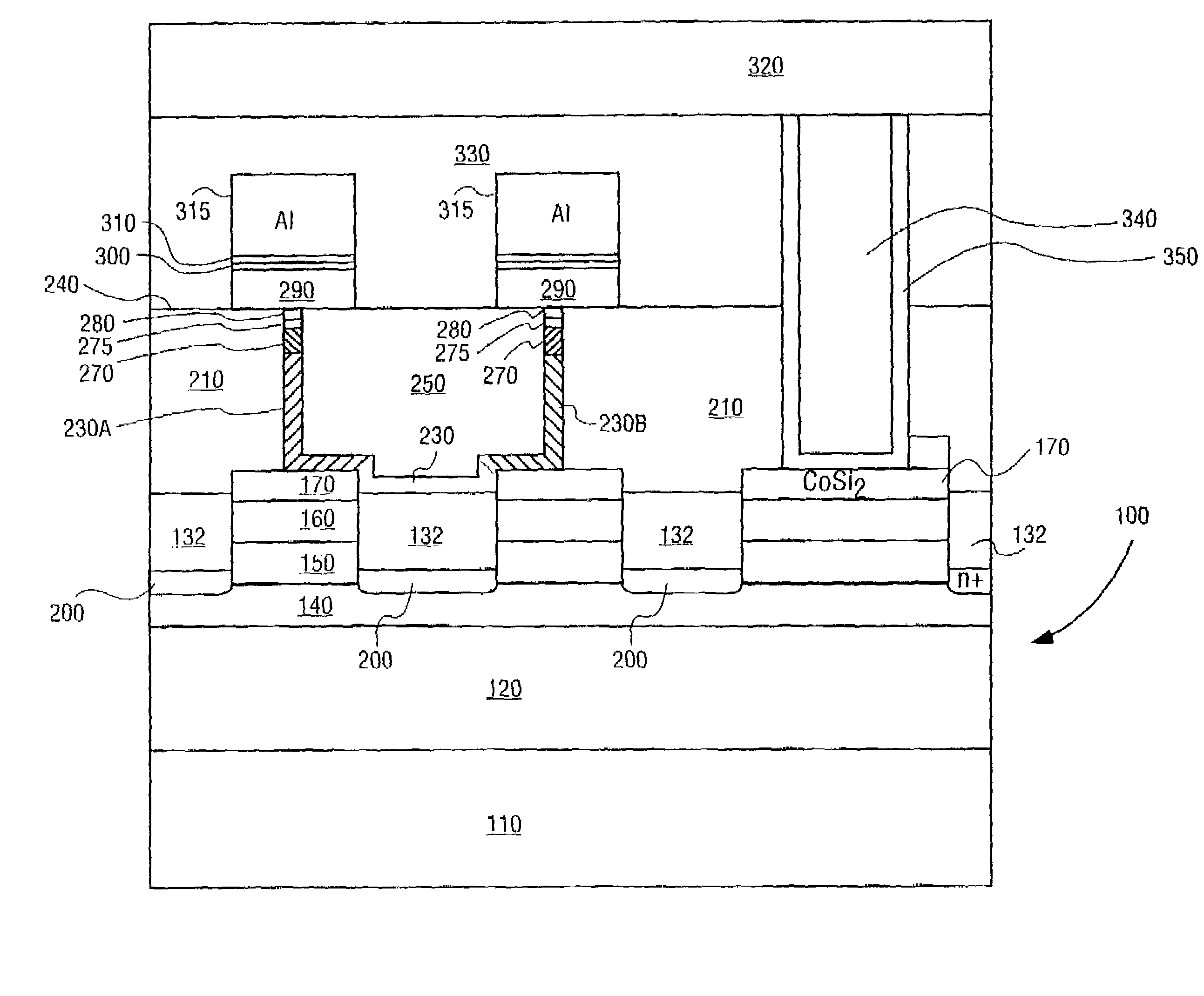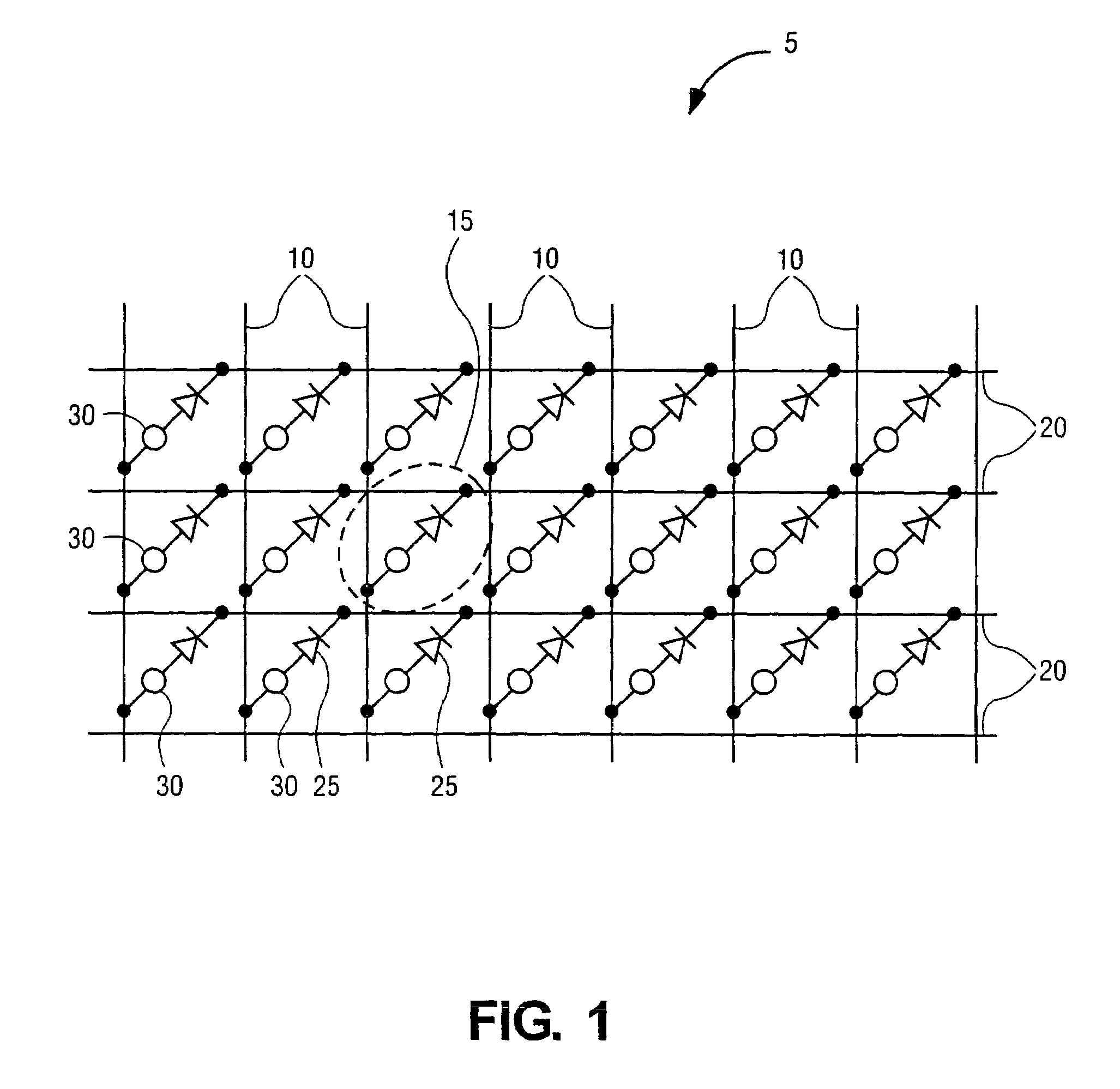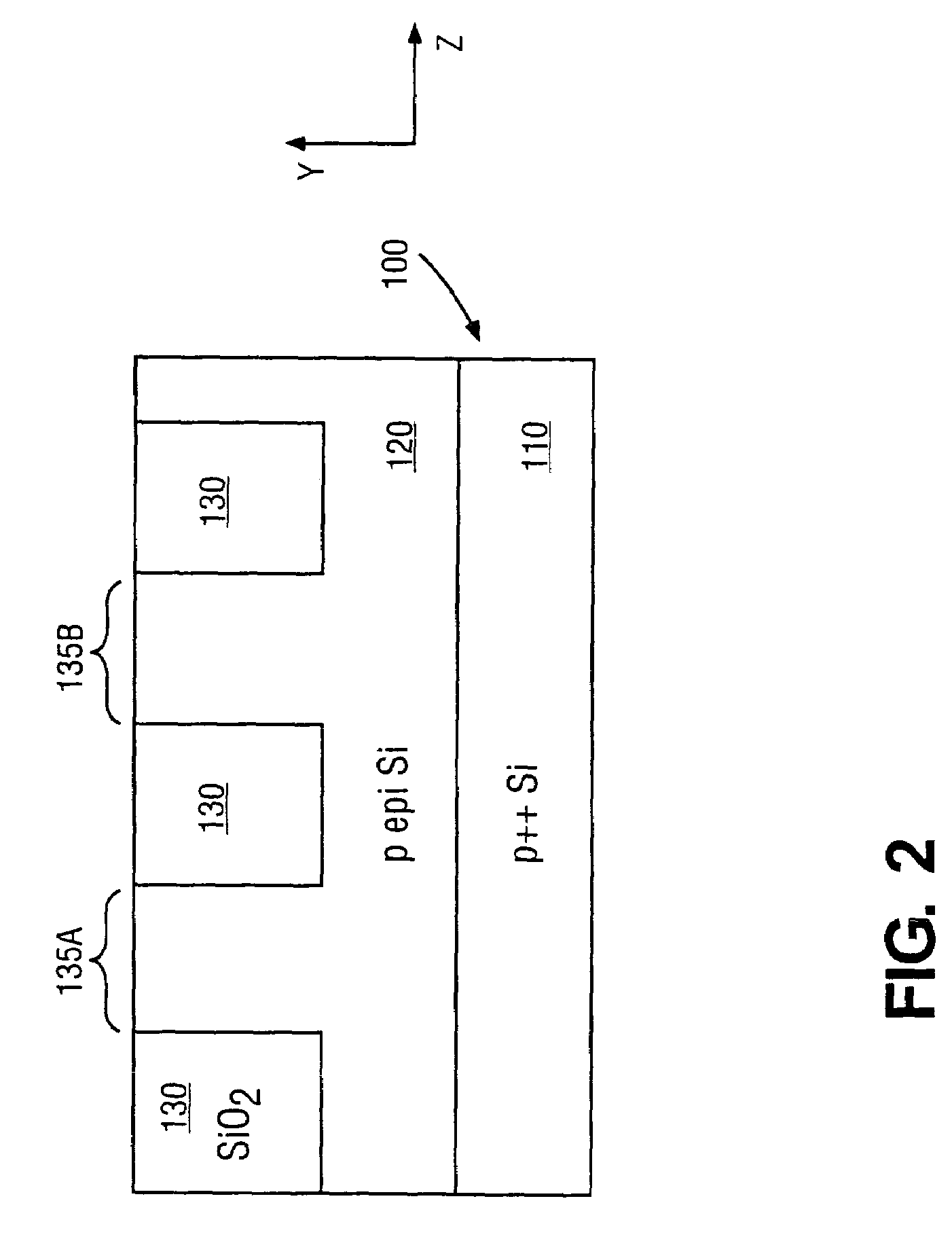Lower electrode isolation in a double-wide trench and method of making same
a technology of low electrodes and trenches, which is applied in the direction of digital storage, semiconductor devices, instruments, etc., can solve the problems of conductive failure, increasing the incidence of ricochet of dopants instead of implantation, and becoming increasingly difficult to properly dope the matchstick structur
- Summary
- Abstract
- Description
- Claims
- Application Information
AI Technical Summary
Benefits of technology
Problems solved by technology
Method used
Image
Examples
Embodiment Construction
[0035]The invention relates to a memory device that is used with phase-change material to memorialize data storage. The device uses a lower electrode material that is referred to as a “matchstick”. Beneath the matchstick, an active area that may be a diode stack is provided to activate the lower electrode. A first isolation trench may be formed, followed by formation of a second isolation trench. The second isolation trench is orthogonal to the first isolation trench. The lower electrode is formed over the diode stack portion of the memory cell structure, and a volume of phase change memory material is disposed above the matchstick. Either a high resistivity metal compound may be used as the lower electrode, or a polysilicon compound may be used.
[0036]The following description includes terms, such as upper, lower, first, second, etc. that are used for descriptive purposes only and are not to be construed as limiting. The embodiments of an apparatus or article of the present inventio...
PUM
 Login to View More
Login to View More Abstract
Description
Claims
Application Information
 Login to View More
Login to View More - R&D
- Intellectual Property
- Life Sciences
- Materials
- Tech Scout
- Unparalleled Data Quality
- Higher Quality Content
- 60% Fewer Hallucinations
Browse by: Latest US Patents, China's latest patents, Technical Efficacy Thesaurus, Application Domain, Technology Topic, Popular Technical Reports.
© 2025 PatSnap. All rights reserved.Legal|Privacy policy|Modern Slavery Act Transparency Statement|Sitemap|About US| Contact US: help@patsnap.com



